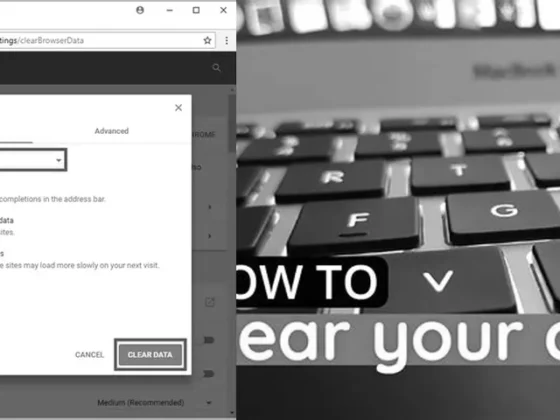How Do You Autofill Cells Without Dragging: Are you tired of spending countless hours dragging and filling cells in Excel? Well, fret no more! In this blog post, we’re going to show you a nifty trick to master Excel autofill without the drag. Say goodbye to mindlessly dragging cells and say hello to a more efficient and time-saving method. Whether you’re a beginner or an advanced Excel user, this guide is here to revolutionize the way you work with spreadsheets. So, let’s dive in and discover the secret to effortlessly autofilling cells in Excel, without the need for dragging.
Mastering Excel Autofill Without the Drag
Excel’s Autofill feature is a significant time-saver when it comes to entering data or formulas in a spreadsheet. However, dragging the fill handle is not always feasible or efficient, especially with large datasets. This blog post will guide you through alternative methods to utilize the Autofill feature without the need for dragging, ensuring your productivity remains high.
Understanding Excel Autofill
Before jumping into the alternatives to dragging, it’s essential to understand what Autofill is. The AutoFill feature in Excel detects patterns in your data and uses these to automatically fill in the series for you. This could be as simple as incrementing numbers or as complex as extending formulas. It can also recognize days of the week, months, and other sequential patterns.
Using Fill Command from the Ribbon
One of the easiest methods to autofill cells without dragging is to use the Fill command in the Excel ribbon. Here’s how to do it:
- Select the cell with the formula you wish to extend to other cells.
- Highlight the adjacent cells where you want the formula or data to be copied.
- Click on the Home tab, navigate to the Fill option, and choose the direction you want to autofill – Down, Right, Up, or Left.
This method is straightforward and eliminates the need to drag the fill handle across potentially thousands of cells.
Efficient Keyboard Shortcuts
For those who prefer keyboard shortcuts, Excel has you covered. After selecting the cells:
- Press Ctrl+D to fill the formula down in a column.
- Press Ctrl+R to fill the formula to the right in a row.
These shortcuts can drastically reduce the time spent on repetitive tasks.
Creating a Series Without Dragging
If you need to create a sequence of numbers, dates, or other patterns, Excel’s Series dialog box is your friend. Here’s a step-by-step guide:
- Enter the starting value (e.g., 1) in cell A1.
- Select the range where you want your series to appear.
- Go to Home > Editing > Fill > Series.
- In the Series dialog box, make the necessary selections based on the type and step value of the series you need.
- Click OK, and Excel will fill the cells accordingly.
This method gives you more control over the pattern of your series.
Autofill Days and More Without the Mouse
For inputting dates, days, or months, you can still avoid dragging. Instead, you can click and hold the left mouse button on the fill handle and drag just the plus sign over the cells you want to fill. While this involves some dragging, it’s a quick method when working with smaller datasets and does not require you to drag the entire cell.
Advanced Autofill Techniques
Beyond the basics, there are more advanced techniques that leverage Excel’s power to autofill without dragging. These include:
- Using Excel tables, which automatically expand formulas when new rows or columns are added.
- Employing VBA (Visual Basic for Applications) to write scripts that can autofill based on your specific criteria.
- Combining functions like OFFSET and INDIRECT to dynamically fill formulas without manual intervention.
Each of these methods requires a bit more Excel knowledge but opens up powerful possibilities for managing data efficiently.
Conclusion
Autofill is a versatile feature in Excel that, when used correctly, can save you a significant amount of time. By utilizing the Fill command from the ribbon, keyboard shortcuts, or the Series dialog box, you can autofill cells with precision and without the need to drag across cells manually. Whether you’re working with numbers, dates, or formulas, mastering these techniques will enhance your Excel efficiency and accuracy.
Final Tips and Best Practices
While the methods described are effective, here are some additional tips to ensure you get the most out of Excel’s Autofill feature:
- Always preview the autofill data before committing to it to ensure it matches the expected pattern.
- Make use of Excel’s “Flash Fill” feature for more complex data entry tasks that do not follow a simple pattern.
- Remember that Autofill can also copy formatting, so be mindful of any cell formatting that may be extended along with your data.
By incorporating these techniques into your Excel workflow, you’ll be able to manipulate data with greater dexterity, making you a more proficient and effective user of this powerful tool.
FAQ & Related Questions about Autofilling Cells Without Dragging
Q: How do you autofill cells without dragging in Excel?
A: To autofill cells without dragging, select the cell with the formula and the adjacent cells you want to fill. Then, click on Home > Fill, and choose either Down, Right, Up, or Left. Alternatively, you can use the keyboard shortcuts Ctrl+D to fill down in a column or Ctrl+R to fill to the right in a row.
Q: How do I fill cells in Excel without dragging?
A: To quickly fill numbers in cells without dragging, enter 1 in cell A1, go to Home > Editing > Fill > Series, and choose the desired autofill option.
Q: Is there a way to automatically fill cells in Excel?
A: Yes, you can automatically fill data in worksheet cells in Excel. There are various autofill options available, such as filling a range with the same value or filling cells based on a series or pattern.
Q: What is the fastest way to autofill in Excel?
A: The fastest way to autofill in Excel is by using the fill handle. Simply drag the fill handle across the range you want to autofill, and Excel will automatically fill the cells based on the pattern or series detected.
Q: How do I autofill in Excel without formatting?
A: To autofill in Excel without formatting, drag the fill handle to populate the range, release it, and then click on the Auto Fill Options drop-down menu. From there, select “Fill Without Formatting” to prevent overwriting the existing cell formatting.
Q: What are the two ways of autofilling cells in Excel?
A: In Excel, there are two ways to autofill cells. The first way is by using the fill handle, where you can drag it across the range to automatically fill cells based on the pattern or series detected. The second way is by selecting the cells you want to autofill and choosing the desired autofill option from the Home > Fill menu or the Table > Autofill Cells option in the Numbers menu bar.


